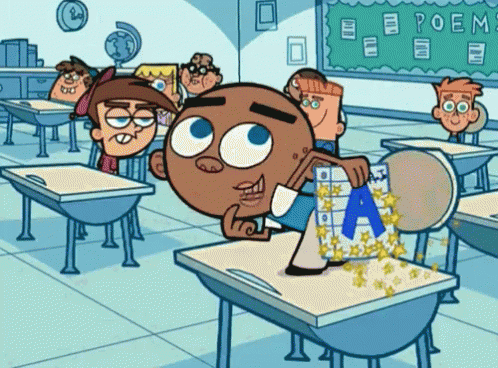It belongs to everyone, so it most certainly belongs in the classroom. As a huge proponent of pop culture myself, I whole-heartedly agree. I think classes with professors who frequently utilize pop culture examples are the most memorable for students - at least, they were for me. Even more than that, the classes I've taken that incorporated the use of pop culture within the actual instructional material were some of the most engaging and memorable classes for me. Also, by using popular culture, we as teachers can appear more relatable to the students who already feel disconnected from us on day one.
I think it's foolish to turn your nose at the use of pop culture for not being "educational enough". Surely we can teach pop culture in a way that informs and engages students. In Karen's undergrad Intercultural Communication class (COMM 3620), as well as in the COMM 4240 class Rhetoric and Popular Culture, students are given opportunities to pick popular culture artifacts and examine them, or create popular culture artifacts themselves. Not only do I think this is beneficial for students' learning, but it also makes grading way more fun for me.
I like being able to see their interests and passions shine through their work. I often start the day with a fun Question of the Day on the attendance sheet, something like "What do you eat first on Thanksgiving?" or "If you had to choose a limb to cut off, which would you choose?" I think these questions get the students started on being engaged that day, but also allow me to engage with them based on their answers.
Back to incorporating popular culture in the classroom, I think that when we let students pick what they write about or work with, it gives them more motivation to put effort into an assignment. It makes learning more fun, too. When you're interested in the material, or are able to directly understand the connection to it and the real world, you have a better time learning and keep the concept with you for a longer period of time.
Pop culture fucking rocks at helping students understand things better. Our world is so immersed in pop culture - especially as the technological world continues to advance and permeate our entire lives. I often incorporate memes into my slides and use examples from popular television shows or movies that I think my students can relate to. It never hurts to be relatable, it only helps you reach those so-called "unreachable" students. #SoCanYou



First off LOVE the title and I could not agree more! Pop culture is something I wish my High School teachers used more of, instead of the stupid worksheets! Popular culture is academic, and we know this because -- I'm not sure if you heard but, there was a WHOlE class was taught using Batman! That alone proves that we can learn from popular culture, and the QOTD's are extremely helpful when it comes to getting an idea of what the students like which could help you find out what they are interested in. I personally love the use of popular culture, I just wish I was better at implementing it in my classroom! #BerryBlues
ReplyDeletePop culture is my favorite thing! It helps me as the instructor, not get bored and it also keeps students engaged. I truly wish I had more pop culture in my primary education. Going to college was the first time I saw that teachers were able to connect our materials with pop culture in a way that helped me truly understand the content.
ReplyDeleteHey Kassie! Definitely loved the mentioning of COMM 3620 and the assignment of analyzing a film. Using popular culture in the class has many benefits, such as helping students understand material more effectively and teachers have the potential to relate more with students through the use of pop culture. Similar to the rhetorical analysis assignment in COMM 1010, students select which text/artifact they would like to analyze, where most students selected songs, movies, tv episodes, or even commercials. When we give students the agency to select their own popular culture references, similar to the film critique assignment in COMM 3620, they can tailor the course content to personal examples within their own lives. Therefore, not only can teachers use popular culture as examples to help explain content, but when we allow students to use popular culture, they can better understand how the content relates to their lives. Integrating course content from Intercultural Communication to the movie, "Little Miss Sunshine," helped me understand and learn more about the material we covered throughout the semester. Popular culture belongs in the classroom as a teaching tool for both students and teacher.
ReplyDeleteFirst off, I love your title! I agree with the idea that classes that have used pop culture have been the ones whose content has stuck with me the longest. I think that has a lot to do with the fact that the material was portrayed to me in a way that I had a jumping point of familiarity to work from! I took both of the classes you mentioned, and those are also some of the ones that made the biggest impact on me as a student and some of the courses that inspired me to go to grad school to further my research in comm. Memes are also a favorite of mine when I'm lecturing from a powerpoint, because it's something that's a safe bet has circulated in my students' social media as well.
ReplyDelete